Trunk Balance More On How To Turn Your Hips
- by Kelvin Miyahira
We’ve looked at many micro moves over the past three or four years and this month I’d like to cover a topic that’s more of a macro movement that may be affecting your swing without much notice. While many are caught up in the swing plane from the target view, let’s try to ignore it for now and just look at larger body movements of the trunk and the effects it has on other key elements of your swing.

Let me start by drawing some lines and circles (doesn’t have to be exact, you just want a rough idea). Draw a line for the back and a line for the front of the torso. Then you can add lines for the top of the thighs and a circle for the head.

Notice (yellow circle) Tiger has already bent down slightly (spine flexion) while Hunter head has moved back slightly (spine extension).

Tiger’s head has moved even more down and toward the ball (green circle) while Hunter is slightly up and back.

Similar downward movement in both at this point.

Tiger’s head is moving up and back (white circle) while Hunter’s head has moved even farther down. What’s causing that? Why does Tiger have to jump out of the way to hit his shot whereas Hunter can stay down and rotate through? Remember both of Tiger’s feet jumping backwards in a fairway bunker to try to avoid hitting a fat shot (unsuccessfully)? Could this have the same origin?

To find the answers to these questions, let’s take a look at how their torso balance is changing. We know a lot about weight shift from the front view and whether a golfer is loading the right or left side on the backswing. But the perspective of heel to toe balance has not been adequately understood. So here’s my take on it. If you’ll look carefully at the green dotted lines I’ve drawn on both players you can see that Tiger has significantly more of his torso in front (weight on toes) of the red lines that were drawn at address. Contrast that to Hunter who has more of his torso behind (weight on heels). Does this make any difference?
Logically, it does make a huge difference especially since Tiger must move his torso away from the ball in order to make space for his arms and club to hit the ball whereas Hunter can move toward the ball.
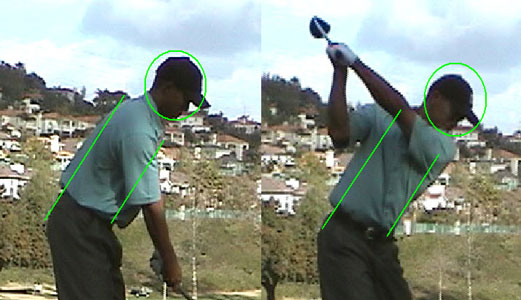
In the good old days, Tiger was in far better balance with more weight on his heels on the backswing and spine more in extension than flexion. And his head moved off the ball in two directions; away from the ball and away from the target.
Keep your head still??? Don’t think so.
See more examples below.

Dustin Johnson
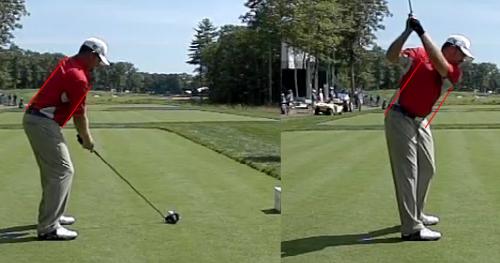
JB Holmes
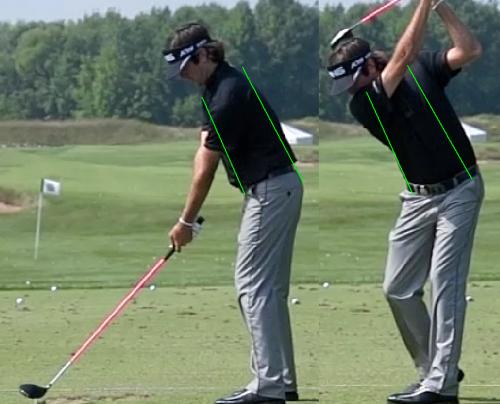
Bubba Watson
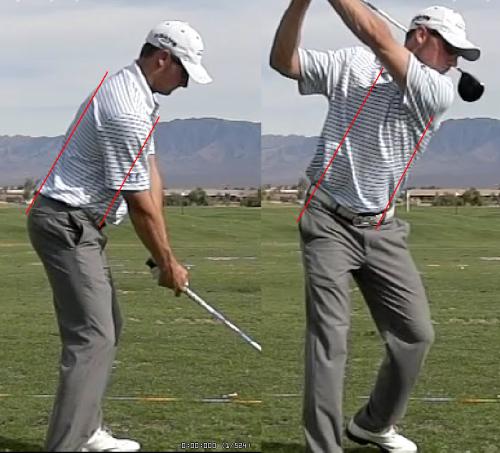
Jamie Sadlowski
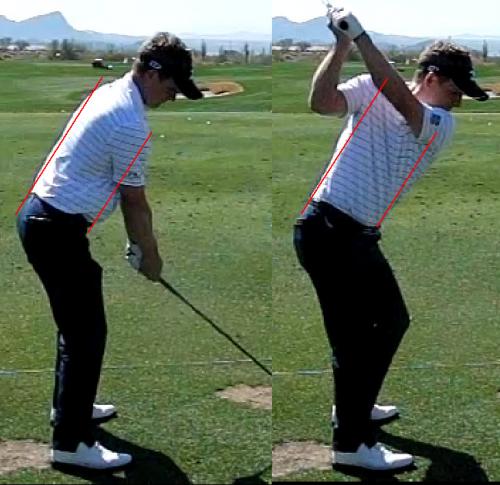
The next two are more evenly balanced, Luke Donald and below Ryo Ishikawa.
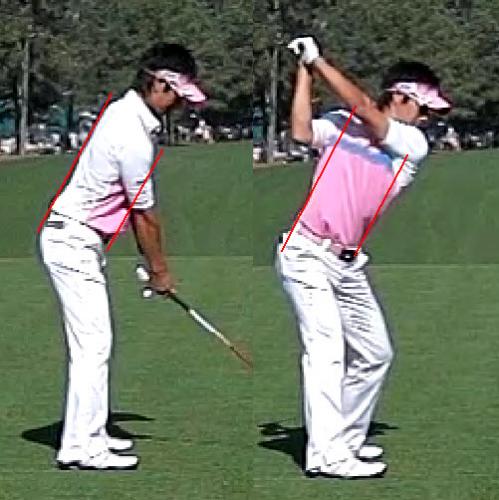
DIPPITY DO DA
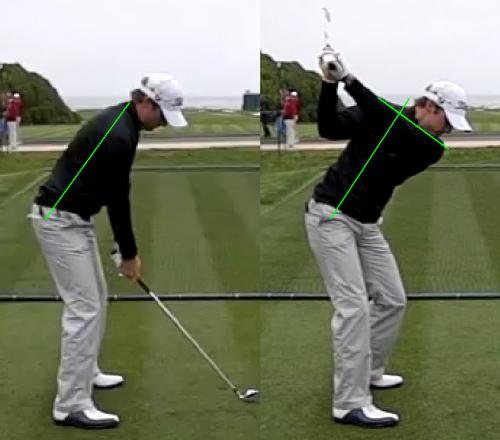
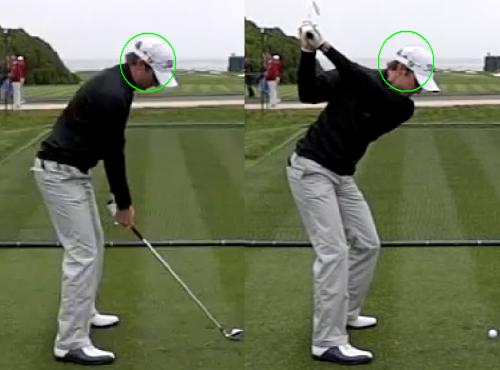
The shoulders are thought by some to turn perpendicular to the spine which comes from the flawed premise that the spine is straight. Then swing beautificationers who like nice geometric lines/angles make up theories that will have you turn the shoulders perpendicular to the spine. This causes an extra tilt in your left shoulder on the backswing, which in turn causes a head dip and some potential errors in arm position. See below.
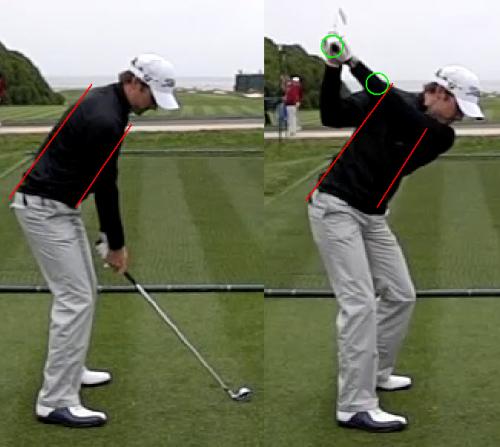
Here’s another negative effect. Since the head dips and the shoulders tilt excessively, his hands will tend to move too far behind his shoulders in an effort to counterbalance the torso weights that has moved out toward the toes.
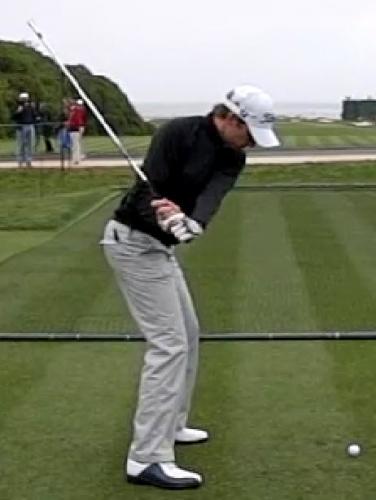
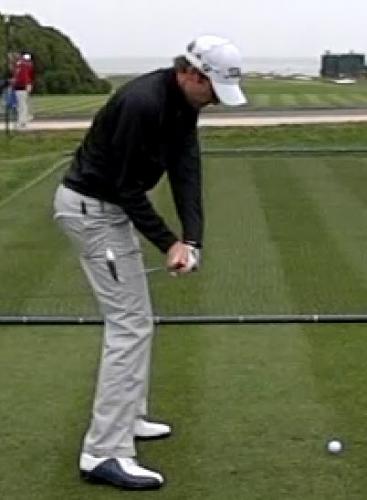
Doesn’t this cause excessively flat downswing and cause the path to be too far right? Of course the other option would be to swing over the top from that position and be right on plane!
MORE DIPS
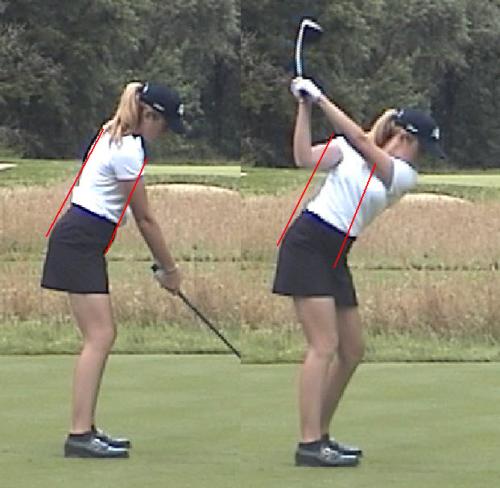
Talent overcomes bad instruction.
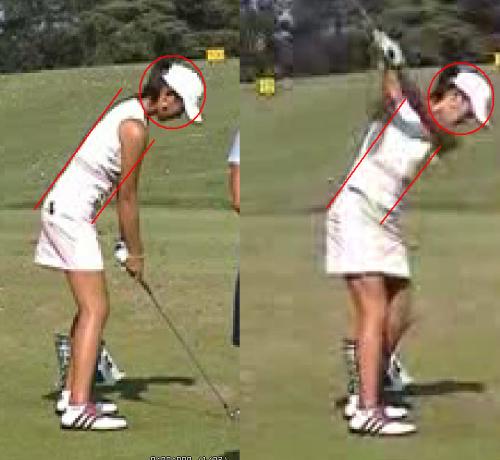
So pretty. She keeps her head so still and tilts her left shoulder down to the ball so much that her shoulders look like they turn “perpendicular to her imaginary spine.” Not enough talent to overcome the wrecking ball of instruction.
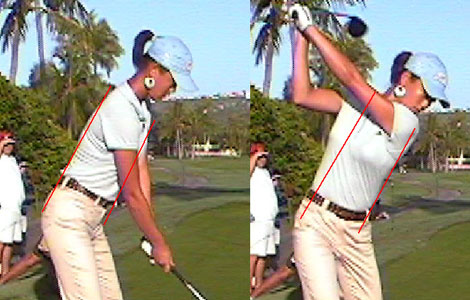
In 2004, she was like the bombers.
HIP BALANCE
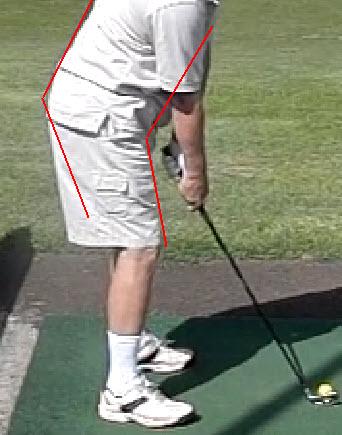
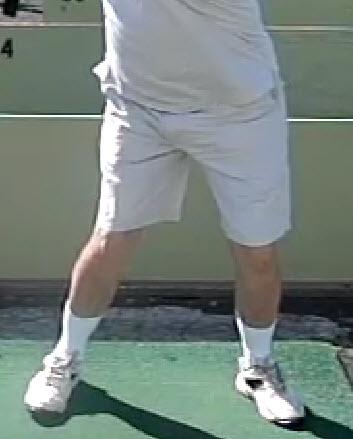
This is an issue of trying to stay internally rotated on the right hip which locks the hip in place. In a way, this makes the right hip the axis of rotation or the “door hinge” and the left hip is the “swinging door”.
TOP VIEW OF HIP TURN
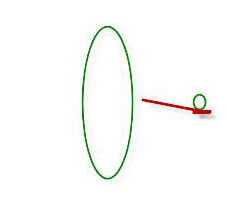
Imagine we are looking down at the golfer’s hips from top view.
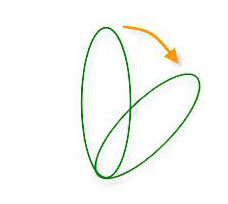
Here’s how the hips move when incorrectly performing a backswing while only rotating the right hip internally.The right hip becomes the axis of rotation with the left hip moving around it. The center of mass of the hips will move toward the ball which will typically trigger a pulling away from the ball on the downswing that’s sort of like a bail out move for a baseball hitter. Not good.
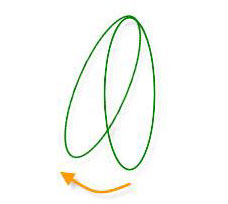
Correctly done, as old Tiger shows, the right leg straightens slightly in the first half of the backswing, the right hip externally rotates and the right hip is pulled back using the left hip as the door hinge.
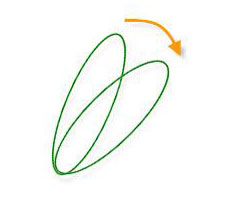
The second half of the backswing looks like this. As right hip reaches the end of its range of movement of external rotation, it will begin to internally rotate and become the axis of rotation.
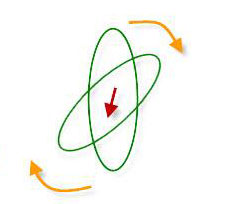
The overall sense of the motion is that there is first a slight shift to the right and toward the right heel during the takeaway (right hip adduction/left hip abduction), then the right hip pulls back, then the left hip rotates slightly out toward the ball to create what we think of the hip turn movements. This will enable the torso balance to be correct vs. the incorrect will generally move the weight toward the toes on the backswing like the amateur’s swing.
For most amateurs, this is a hidden error than leads to many swing errors and compensations later in the downswing.
Sure there may be some tour guys that get their balance toward their toes on the backswing, but not to the degree that I’ve seen with amateurs and they can practice many hours a day perfecting their compensation moves. So this is definitely something to be looked at.
Also on June 23rd I will be doing half-day clinics at West Point Golf Course in New York. There are a few open slots left. Contact me at This email address is being protected from spambots. You need JavaScript enabled to view it. for more information if you’d like to sign up.